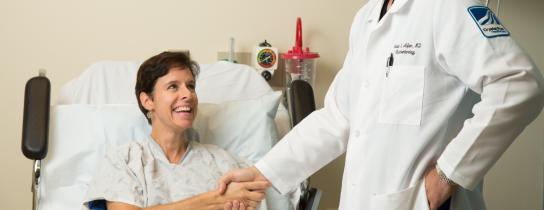
Nipple Sparing Mastectomy
There are many surgical procedures for breast cancer. They vary from lumpectomy, a.k.a. partial mastectomy (removing the cancer with a bit of normal tissue around it), to mastectomy (removing the cancer with the majority of the breast tissue with it). Mastectomy can be used for both treatment and for prophylaxis (risk-reducing surgery for high-risk and carriers of genes that predispose patients to breast cancer). I’d like to start today’s blog with the statement that nipple-sparing mastectomy does not increase the risk of breast cancer!
What is Nipple Sparing Mastectomy (NSM)?
Nipple sparing mastectomy (NSM) is a technique which involves the removal of the majority of the breast tissue without the removal of the skin of the breast, or the nipple-areolar complex.
It is the product of the evolution of mastectomy from radical mastectomies, where the muscle was taken away, to modified radical mastectomies where the muscle was preserved, to skin-sparing mastectomies where the majority of the breast skin was kept for cosmetics, to NSM where the entire breast “envelope” is preserved.
Reconstruction can then be done with either an implant or with the patient’s own tissue and is done at the time of the breast surgery. Many studies have demonstrated that preservation of the nipple-areolar complex is safe and does not increase the risk of subsequent cancers substantially.
NSM Candidates
Nipple sparing mastectomy is possible in both small and large breasts. The most important criteria is that the cancer is not involving the nipple. Women with larger tumors near the nipple are not good candidates: smaller, more peripherally located tumors are generally better.
Women with smaller breasts tend to be better candidates than large-breast women; however, in certain cases, women can undergo a breast reduction prior to NSM (a staged procedure).
Smoking is a contraindication to breast reconstruction: the rate of healing issues and infections are much greater in smokers. Prior radiation is a relative contraindication, as well.
NSM Benefits
Preservation of the nipple areolar complex leaves a more natural-appearing result. Scars are often at the inframammary crease or lateral to the areola. It is as effective in treating cancer as conventional regular or skin-sparing mastectomies and the survival is the same.
NSM Risks
A NSM is a safe procedure in terms of cancer, but like any procedure there are potential complications. Any breast surgery can have bleeding or infection or problems with the “skin flaps.” With NSM, there is also a chance of loss of all or a part of the nipple itself: although the changes are <10%, it is still possible.
Most women lose sensation to the nipple-areolar complex, although some women do get some sensation back. As a surgeon, I tell my patients not to expect any sensation to return, and if it does return, that’s great. I’ve seen sensation return up to three years later, so it’s a long process.
We have pathology evaluate the nipple margin (the edge of the nipple) for the presence or absence of cancer intraoperatively. Sometimes patients we thought were appropriate candidates turn out not to be. Sometimes, when the final pathology comes back 3-5 days post, we learn the nipple-areolar complex was involved and the patient may need it removed later, usually at the time of the final reconstruction.
No matter what the surgery, the patient may not be happy with the cosmetic outcome. We do our best, along with Plastic & Reconstructive Surgery.
It is very important to talk with the plastic surgeon as well as the breast surgeon about what options are available. Make sure your surgeons are capable of performing the operations.
I will end with the same phrase as I began with - “nipple-sparing mastectomy does not increase the risk of breast cancer!”
Some Useful Links:
- https://www.facs.org/media/press-releases/2017/mastectomy071717
- http://www.breastcancer.org/treatment/surgery/mastectomy/nipple-sparing
- https://ww5.komen.org/BreastCancer/BreastReconstruction.html
- http://www.ascopost.com/issues/september-10-2016/nipple-sparing-mastectomy-shown-to-be-safe-and-increasingly-preferred/

 Optum Radiology at Crystal Run Healthcare
Optum Radiology at Crystal Run Healthcare Request medical records online
Request medical records online